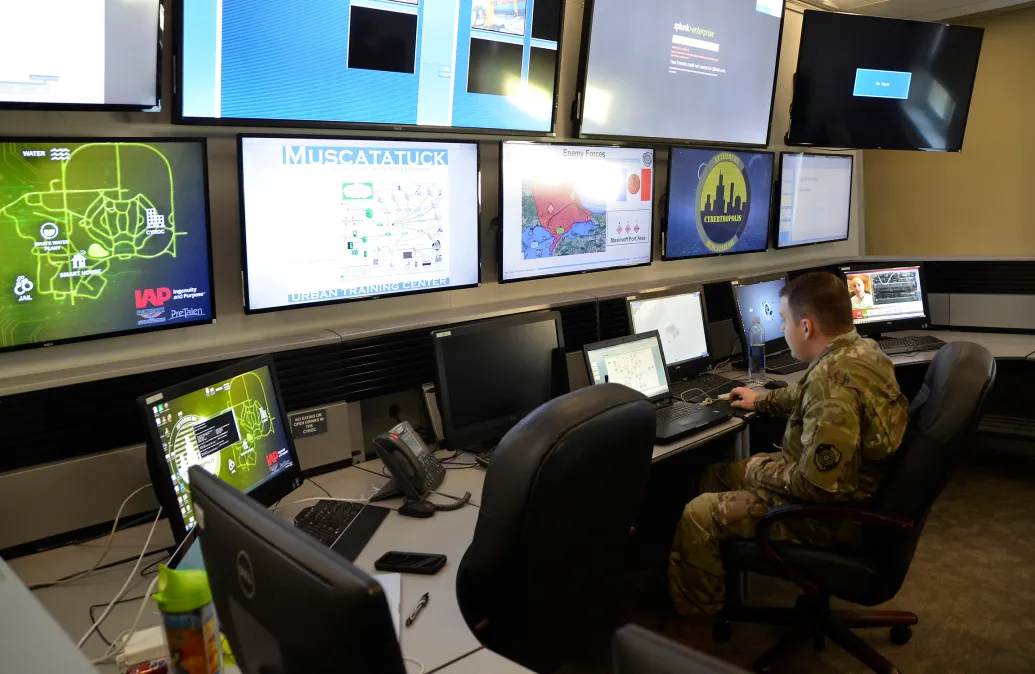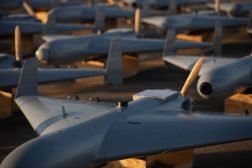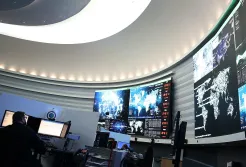Army to create new offensive cyber and space program office

ABERDEEN PROVING GROUND, Md. — The Army will create a new offensive cyber and space program office in 2023, spinning it off from its electronic warfare portfolio, according to officials.
The new colonel-led, or O-6 level, program office will be under Program Executive Office Intelligence Electronic Warfare and Sensors and will be aptly called Program Manager Cyber and Space, officials told reporters at Aberdeen Proving Ground on Tuesday.
It will migrate the offensive cyber programs and capabilities from the current portfolio of program manager Electronic Warfare and Cyber (EW&C) and also incorporate the highly sensitive space capabilities from Product Manager Tactical Exploitation of National Capabilities. Currently, the offensive cyber portfolio is run by a lieutenant colonel, or O-5.
The new office is necessitated by the amount of joint work the Army is doing on behalf of U.S. Cyber Command to deliver capabilities and programs for the cyber mission force across all the services, which grew too big to continue to manage out of the EW&C office.
The services, as executive agents, are responsible for procurement for larger acquisition programs on behalf of Cyber Command for the entire cyber mission force.
The Army is currently the executive agent for something called the Joint Common Access Platform (JCAP), which will provide the infrastructure for those offensive missions. The services’ cyber units will move to the firing platform from separate tools they operate now, more tightly linking their efforts in cyberspace, one of the domains the military is trying to protect as a joint force.
JCAP is part of the larger Joint Cyber Warfighting Architecture (JCWA), which guides all the acquisition priorities and programs for Cyber Command.
ManTech won a $265 million contract in 2020 to support JCAP.
Officials have said the current model for the program allows for a bi-monthly forum to assess gaps, threats, requirements and emerging technology to plan for the injection of capabilities on a faster cycle to outpace threats.
The aim of the program’s agile software acquisition approach is to add new capabilities faster.
“JCAP delivered our first instance or first delivery, we call it MVCR, our first minimum viable capability here a few months ago,” Mark Kitz, program executive officer for IEW&S, told FedScoop at the TechNet Augusta conference in August. “Every other month, we’re doing planning increments, following full agile. We’re delivering full capabilities, almost weekly … We’re continually working with the user and following full agile methodology [because] if we don’t have a DevSecOps, an agile approach to delivery, we’re going to fail on cyber.”
Other joint efforts the IEW&S’s cyber office is working on includes delivering a cyber development environment for the Air Force and Navy, though Kitz noted that this is not a joint solution yet in the executive agent sense.
Within the JCWA is a requirement for a Joint Development Environment. The Army, as part of its own requirements, created the Rapid Cyber Development Network (RCDN), which allows for the free flow of tactics, techniques and procedures as well as a place to rapidly develop and test cyber tools.
The Army is providing this to the Air Force and Navy, but Cyber Command has still not made a decision as to an executive agent for the Joint Development Environment.
“I think Cyber Command is evolving what is that long-term requirement that adds on what the Air Force and the Army have invested in, because Air Force has significant capability in that same area,” Kitz said.
He noted that when Cybercom gains enhanced budget authority in 2024, which will give it responsibility for direct control and management of budgeting, it should not affect the new cyber office.
“I don’t think it’ll have a significant effect,” he said. “The finances will go through Cyber Command. The [program executive memorandum], the financial process, will just shift from the Army to Cyber Command.”
He also clarified that given the RCDN is an Army requirement currently, it has thus far fallen outside of the forthcoming enhanced budget authority for Cybercom.
The new office will also continue work on the Army’s tactical cyber gear, which includes the Tactical Cyber Equipment, a man-packable system that allows expeditionary cyber teams from the 915th Cyber Warfare Battalion to conduct operations plugging into equipment that resides in brigades.
The Army to date has maintained a tight linkage between the cyber and electronic warfare enterprise. On the tactical level they are closely aligned given most tactical cyber is conducted through radio frequency operations.
“Candidly, I think that’s a risk,” Kitz said regarding the potential for diminished coordination with cyber moving out of the electronic warfare program office. “I think we’ve got to take that risk in order to have the right personnel and infrastructure in place. But I also think that we’re integrating EW with our collection infrastructure, with our data infrastructure that we have in our [intel systems and analytics] portfolio. Those core dependencies, and enabling EW already exist in my organization.”
Kitz said the integration directorate within the PEO is charged with building the architecture and touchpoints given that risk exists across the entire program executive office.






